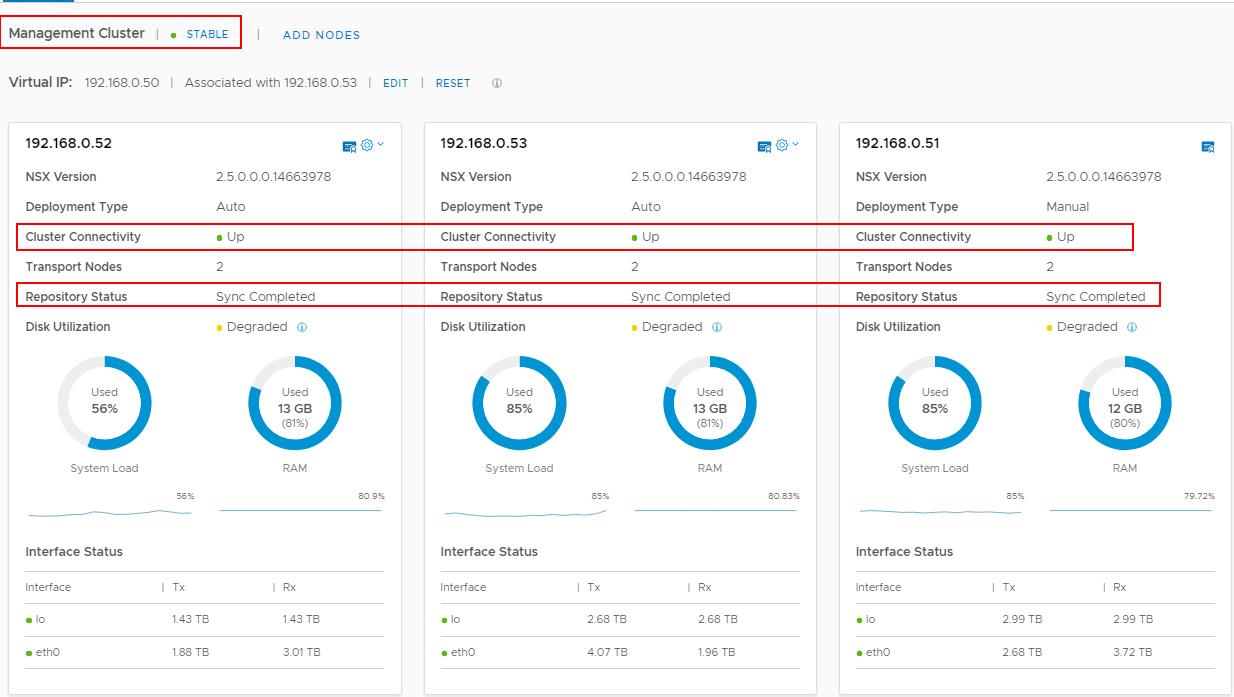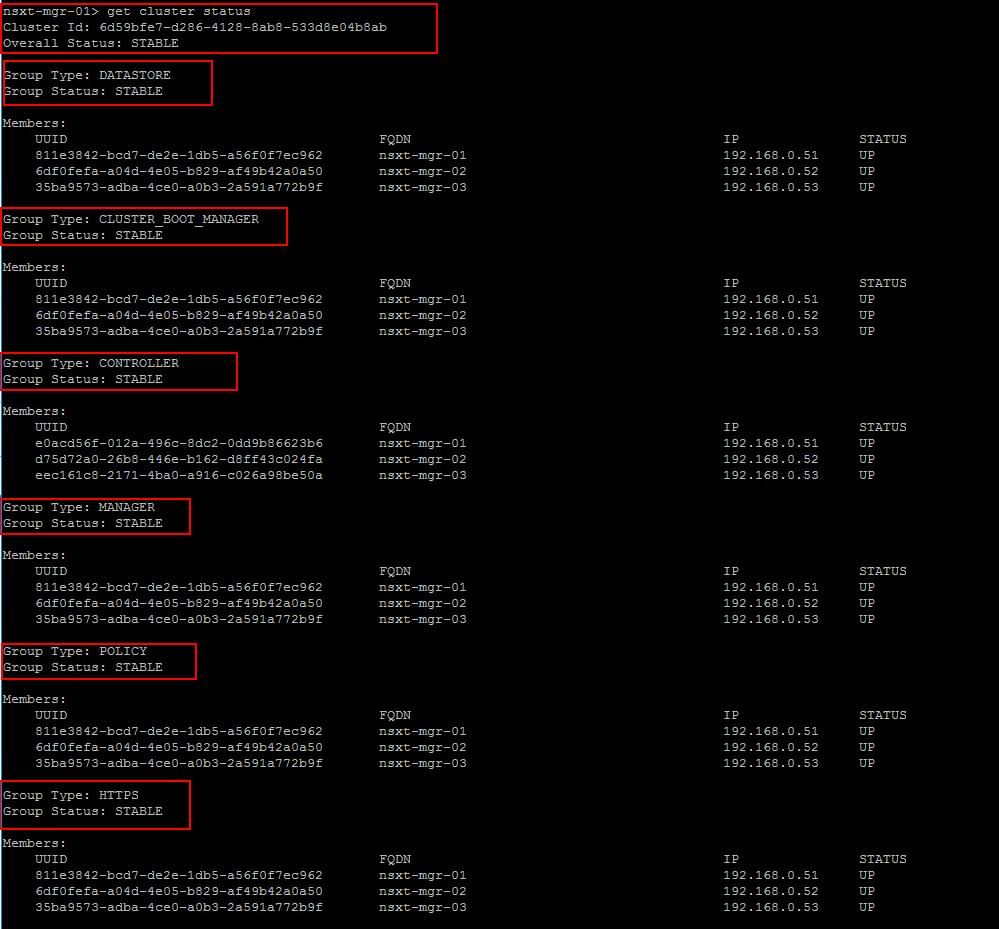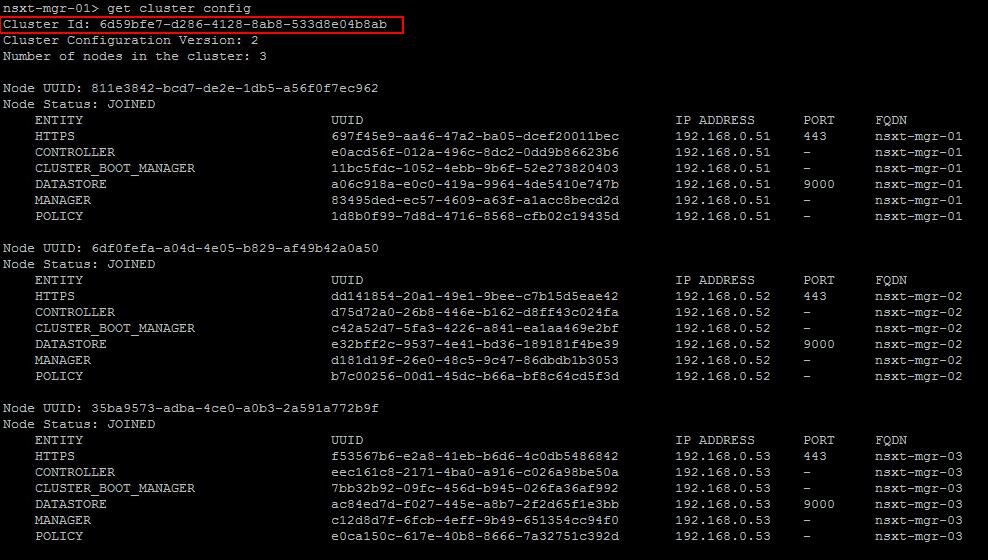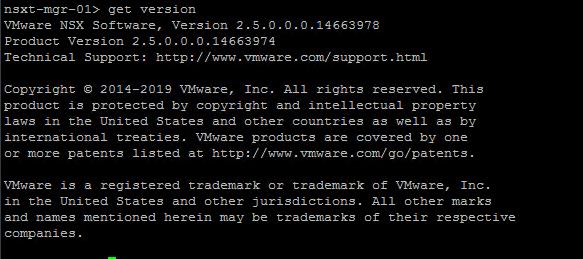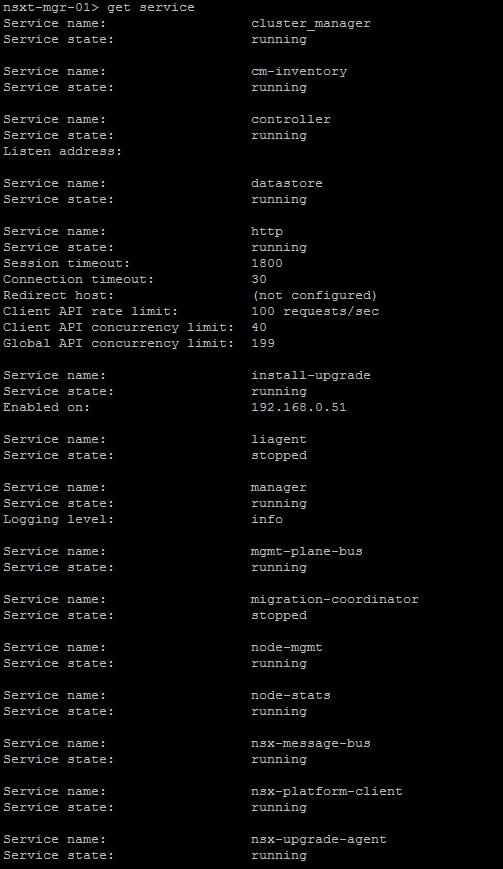As we discussed in our article difference between NSX-V and NSX-T, we need a separate appliance for NSX Manager and Controllers in NSX-V but Both NSX Manager and controller roles are combined into a single unified appliance called NSX-T Manager unified appliance in NSX-T 2.4. Each NSX Manager node includes the management plane, control plane, and policies. As a result of this integrated approach, users do not need to install the manager, controller, and policy roles as separate VMs. VMware recommends deploying 3 nodes NSX-Manager for high availability and scalability
NSX Manager holds built-in roles Policy Manager, Manager role and Controller role. The Management plane includes the policy and manager roles and the central control plane includes the controller role. The desired state is replicated in the distributed persistent database called “Corfu DB” providing the same configuration view to all nodes in the cluster. We will discuss in detail the NSX-T Manager roles and its functions in the different articles. In this article, We will discuss how to validate the NSX-T Management cluster status from the NSX CLI.
As discussed in the previous article, Deploy additional NSX-T Managers, It is very simple to validate the NSX-T Management cluster status from the NSX-T UI. Login to NSX-T Ui with admin credentials. Click on System ->Overview -> Appliances.
You can check the status of the NSX-T Management cluster to ensure the Management Cluster status is “STABLE”, cluster connectivity is “UP” and Repository status is “Sync Completed”
Validate the NSX-T Management Cluster Status from the NSX CLI
We understand that validating NSX-T Management cluster status from UI is simple but it is very important that we should also be aware of validating the NSX-T Management cluster status from CLI aswell. NSXCLI provides more in-depth details about the cluster status along with the status of each of the Group types with its status in each of the NSX manager nodes. It provides in-depth details especially handy when you troubleshoot the NSX-T management cluster issues.
To verify the NSX Management cluster status from the nsxcli command line, log in to any one of the NSX Manager nodes via SSH using the “admin” account.
Run the below command to set the CLI timeout for the NSX-T manager appliance
set cli-timeout 0
To get the status for each of the roles in the NSX Cluster including Policy, Manager, and Controller, run the below command.
get cluster status
From the command output, verify that DATASTORE, CLUSTER_BOOT_MANGER, CONTROLLER, MANAGER, POLICY, and HTTPS groups have a status of STABLE. you can also run the command “get cluster status verbose” to get more details information.
DATASTORE: The DATASTORE group is the ConfuDB cluster. Each NSX Manager node runs a Corfu server, which has information from all the groups or entities running on all of the nodes. Corfu servers are always in sync and logically connected.
CLUSTER_BOOT_MANAGER: This is the NSX cluster manager. After the three-nodes of NSX Manager is deployed and the Management cluster is formed, the cluster boot manager joins the three Corfu server process on the all the three appliances to form a ConfuDB cluster. To form a quorum, at least two Corfu servers are required.
CONTROLLER: NSX Controller is an advanced distributed state management system that provides control plane functions for NSX-T Data Center logical switching and routing functions.
MANAGER: NSX Manager receives and validates the configuration from NSX policy and stores the configuration in the CorfuDB and publishes the configuration to the central control plane.
POLICY: The policy role handles all networking and security policies and enforces them in the manager role
HTTPS: Reverse Proxy is the entry point to the NSX Manager. Reverse proxy has authentication and authorization capabilities.
To query the NSX Manager cluster configuration, run the below command. This command shows the information about the Cluster ID, Cluster Configuration Version, and the number of nodes configured in the cluster. It also shows the information about each NSX manager node UUID and its services. It also shows that the node status is set to JOINED
get cluster config
You can also run the below command to get the NSX Manager nodes which are part of the cluster
get managers
You can also run the below command to get the NSX Manager version.
get version
You can get the status of all the services running on the NSX Manager using the below command
get service
That’s it. we have discussed some of the important commands to validate the NSX-T Management Cluster Status, cluster configuration and service status from the NSX CLI. I believe these commands will be really helpful to troubleshoot the NSX-T management cluster status from the command line. Thanks for Reading!!!. Be social and share it in social media, if you feel worth sharing it.


